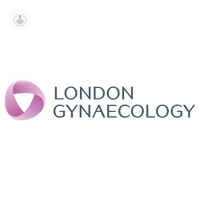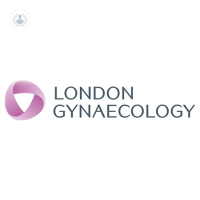Laparoscopic hysterectomy
Mr Osama Naji - Obstetrics & gynaecology
Created on: 10-20-2020
Updated on: 10-10-2023
Edited by: Sophie Kennedy
What is a hysterectomy?
A hysterectomy is a surgical procedure to remove a woman's uterus (womb), and sometimes the ovaries are also removed.

Why may a woman need to undergo a hysterectomy? What does it help to treat?
A hysterectomy may be used to treat a variety of conditions, including heavy periods, fibroids or cancer. Often, a hysterectomy will be chosen when other less invasive treatment options have failed or have been declined.
What is a laparoscopic hysterectomy?
A laparoscopic hysterectomy is an operation that is carried out through the use of keyhole techniques, and therefore, is minimally invasive.
How exactly is a laparoscopic hysterectomy performed?
A laparoscopic hysterectomy is performed with general anaesthesia. Between three to four small incisions are then cut in the patient's abdomen, through which carbon dioxide is pumped in order to enlarge the area and to improve overall access.
A small camera is hereafter inserted, and through the small incisions, surgical tools are used to remove the uterus (and possibly ovaries, the fallopian tube and/or the cervix). Afterwards, the incisions are closed with dissolvable stitches.
What is the main objective of a laparoscopic hysterectomy?
The main goal of this surgery is to ensure the patient is fully alleviated from uncomfortable gynaecological acute or chronic painful symptoms and complaints, most commonly relating to the uterus.
Are there different types of laparoscopic hysterectomy procedures? If so, what are they?
There are four main types of laparoscopic hysterectomy surgical operations:
- A total hysterectomy is a procedure whereby a woman's uterus and cervix are laparoscopically removed.
- A subtotal hysterectomy is when the surgeon removes the uterus but not the cervix.
- A bilateral salpingo-oophorectomy is an operation whereby the woman will undergo a subtotal hysterectomy to have her uterus removed and will then also have one or both of her ovaries and fallopian tubes.
- A total laparoscopic radical hysterectomy is a cancer-oriented procedure where the woman's womb, cervix, fallopian tubes, ovaries, part of the vagina, and some lymph glands are all surgically removed.
What are the main alternatives to laparoscopic hysterectomy surgery?
There are various alternatives for women who do not wish to undergo a laparoscopic hysterectomy. The main alternatives include the following:
- endometrial ablation
- various pharmacological treatments/therapies
- various hormone preparations such as intrauterine system













